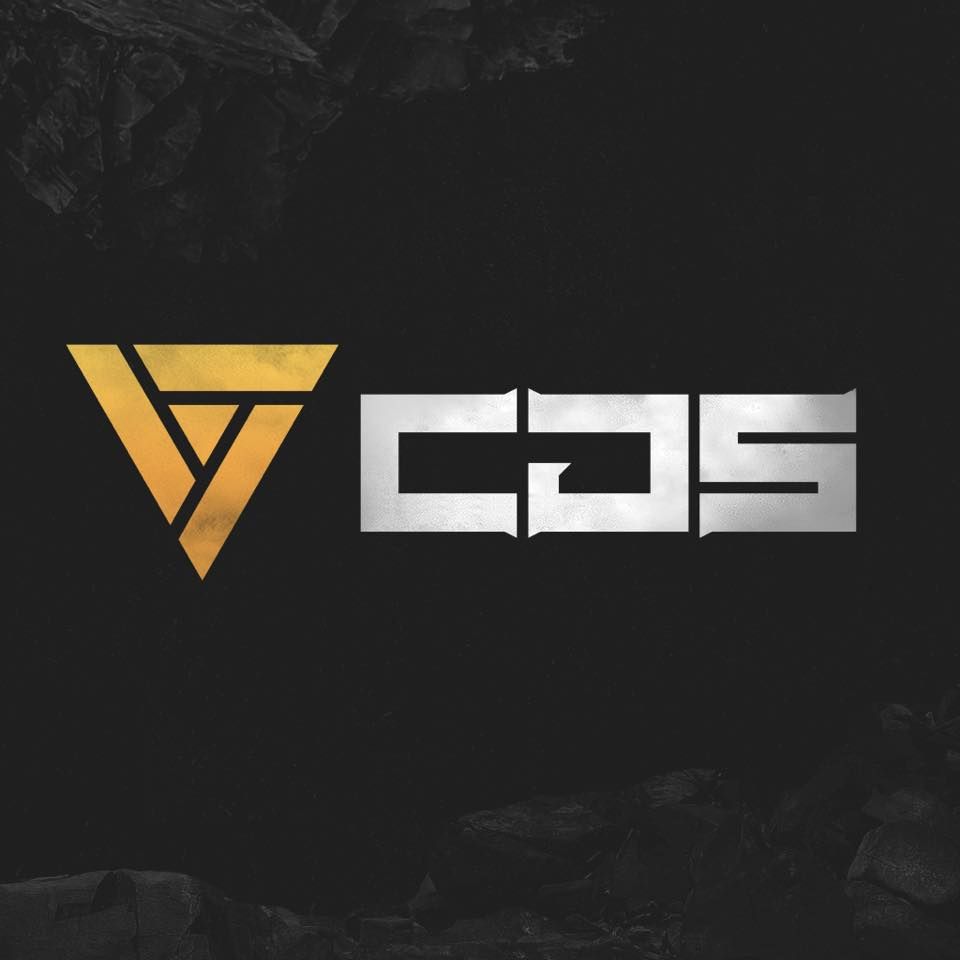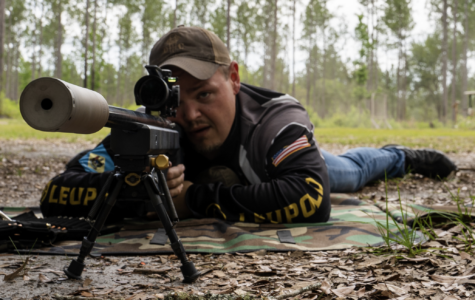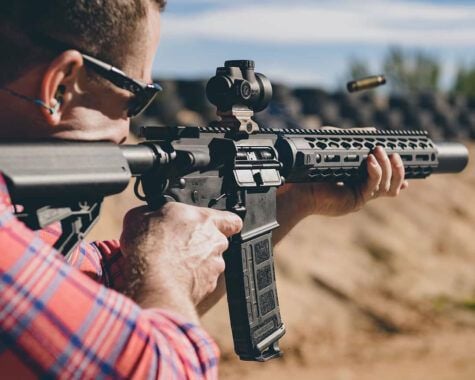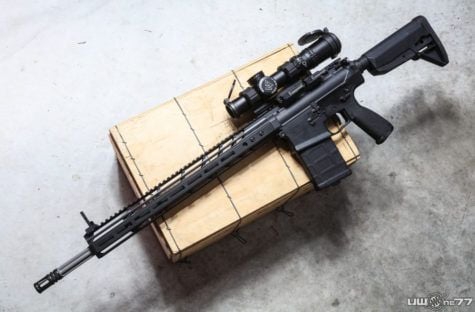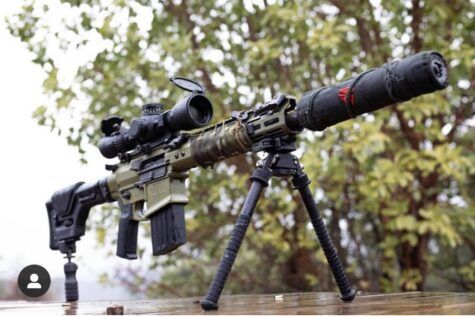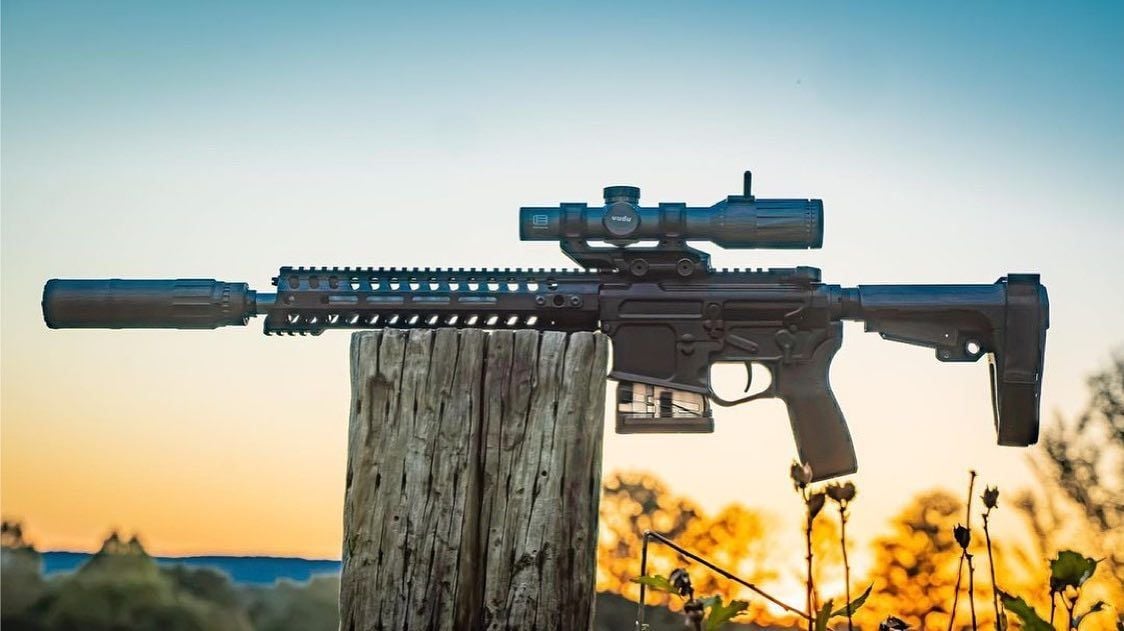
We recently sat down with Bobby West, owner of CGS Group, to discuss his company’s history and how his staff and their unique approach to making suppressors puts them on a short list of manufacturers to consider for your next purchase.
Q: Can you tell me a bit about your title and how the company, CGS Group, started?
Bobby West, CGS Group – My title is up for discussion, but you could say that I am the owner, along with my wife. We have a unique relationship with a bunch of guys from a wounded veterans hunting experience that I was involved with. The guys who put it on were super friendly people, and they were involved in the oil and gas industry.
When these veterans had retired, it was not like they had won the lottery. They stopped doing what it was that they were doing, but then they started to look for another job.
I started to think maybe there was something more we could do with these guys when they retired. Perhaps we could give them something to do with their hands, keep them engaged with their peer group, try to help them transition into the civilian world, and give them a “soft place” to land.
Q: Can you clarify what these folks had retired from?
Bobby West, CGS Group – These guys, in particular, were retiring from the Army, with a special mission background.
Q: We’ve heard a lot of good things about your suppressors. What is your approach to building that sets your company apart?
Bobby West, CGS Group – I give a lot of the credit to these guys I just mentioned. They come from an organization where nothing is impossible, and failure is not an option. They don’t fail at anything. It guides the mindset of our company. If somebody asks us to do something or there is a problem that needs to be solved, immediately we know that we can solve it.
Now, how much effort is required? That’s a different discussion, but we can. We learned that right away when the company first started and we developed our first product. As odd as this sounds, we first produced a firing device for explosive breaching. You would think if would be a silencer, but it wasn’t.
I wanted to do suppressors, as I saw what was out there on the market. While they were good, I didn’t know why they couldn’t be better. If there was no limit to the team I could put together to make some progress – not to to make better candles, but to create lightbulbs – how would I do it?
Q: First step would be building a proper team, I’d imagine.
Bobby West, CGS Group – I had spent some time in the oil and gas industry, out on location while the drilling was being done. I found myself in a trailer, with the internet, for months at a time. One of my favorite websites to visit was Silencer Talk. This was a long time ago, but I never forgot the stuff I saw in there.
There was a guy in there who went by the screen name “Paco Ramirez.” He would post drawings on there. The site, at the time, was filled with people who ran or worked at silencer companies. “Paco” would post drawings that he made that would just blow these people’s minds. He had a lot of exciting, new ways of looking at things. Fast forward a little while, it came out that “Paco Ramirez,” was actually a guy named Josh Parker, who wasn’t even out of high school.
When the opportunity arose for me to start this CGS Group, I thought that ‘I don’t know what that guy is doing right now, but if he is not doing exactly what he was born to do, we need to give him the opportunity to do that.’
Getting Josh onboard was step one. If we had somebody like that, I knew we could be successful as a company. Josh does not live or think in a box. He’s a student of silencer history, and the kid is just a savant when it comes to this stuff.
Anyway, we reached out to him, and to my surprise, he was not in the industry. I think he was working as a security guard at a casino. In my opinion, this was a tragic waste of his talent, and we were thankfully able to get him to come here to work for us.
Q: So, to stay on track, you’re building a suppressor company and end up with your first product being a firing device?
Bobby West, CGS Group – Correct. Josh joined us in 2015, and at that time, CGS Groupas didn’t even have our facility yet. Some people from the special operations community reached out and said they had a desire to update a firing device. There’s a lot of reasons why they wanted to update it that they could not get into, but it was imperative for safety, and they wanted to know if we could do it. With CGS Group, the answer is always going to be “yes.”
Josh went to work and immediately began designing what we now call the Pandora firing device. By the time we had our facility, we got the CNC machines in, and immediately started using them to make the test articles for the Pandora. By this time, we had briefed the idea to the “powers-that-be,” they had asked for a certain quantity of them, we did live-fire demonstrations, etc. When we had the facility operational, it was then time to make test articles for CRANE. We did that, and they passed all the tests.
Fast forward to now, the Pandora firing device is used around the world. It’s a unique, niche thing, but the way I describe it to people is that it “gets you in the door.” Functionally that’s what it does for the people that use it, but we used it for the same reason. It got us “in the door.”
Q: Meaning you could engage some of these organizations in ways you might not have been able to otherwise?
Bobby West, CGS Group – Correct. While we would have discussions about the Pandora firing device, I was fortunate to also be able to ask other questions. I would ask them what they were using for silencers and if they were happy with what they had.
The other thing the Pandora did is demonstrate how open we were to taking an idea for something they need and putting effort into creating it. You can imagine that there’s a lot of ideas out there like that which they need.
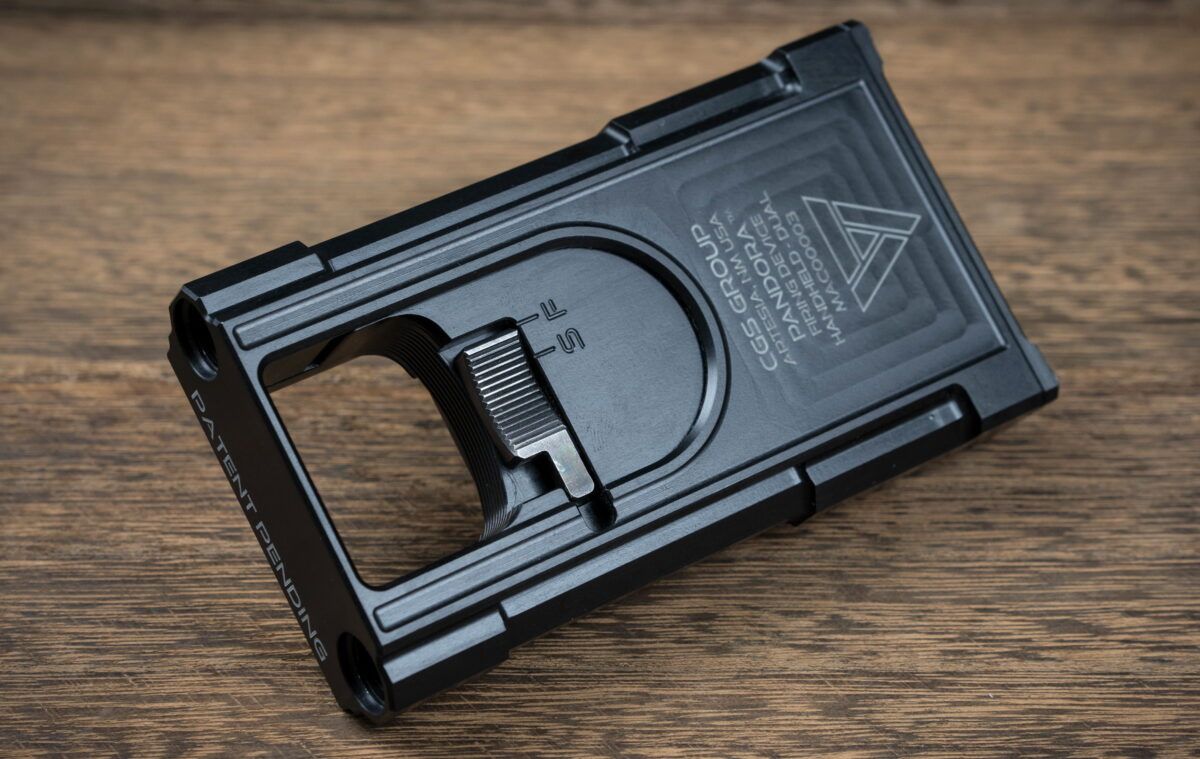
These people have decades of experience working with what they have, the whole time probably thinking, ‘if it was only like this, it would be better.’ So, a lot of the things we make today come from that.
We love the ‘good idea fairies.’ They come in and ask if we can do something for them, and again, the answer is always going to be ‘Yes.’ I don’t need to know what it is for. I don’t need to know why. If they say it has value, there is a pretty good chance we can make it.
Q: What was the first suppressor you ended up making?
Bobby West, CGS Group – Looking at what other companies had done and been successful at, we decided to follow that proven roadmap and start with a .22 suppressor. For example, Silencerco had the Sparrow. Dead Air had the Mask. We felt the learning curve wouldn’t be too steep, and the cost of failure wouldn’t be super detrimental. It was better than starting with a .50 BMG can. If you don’t do that right, it can kill you. A .22 suppressor is a little bit less risky.
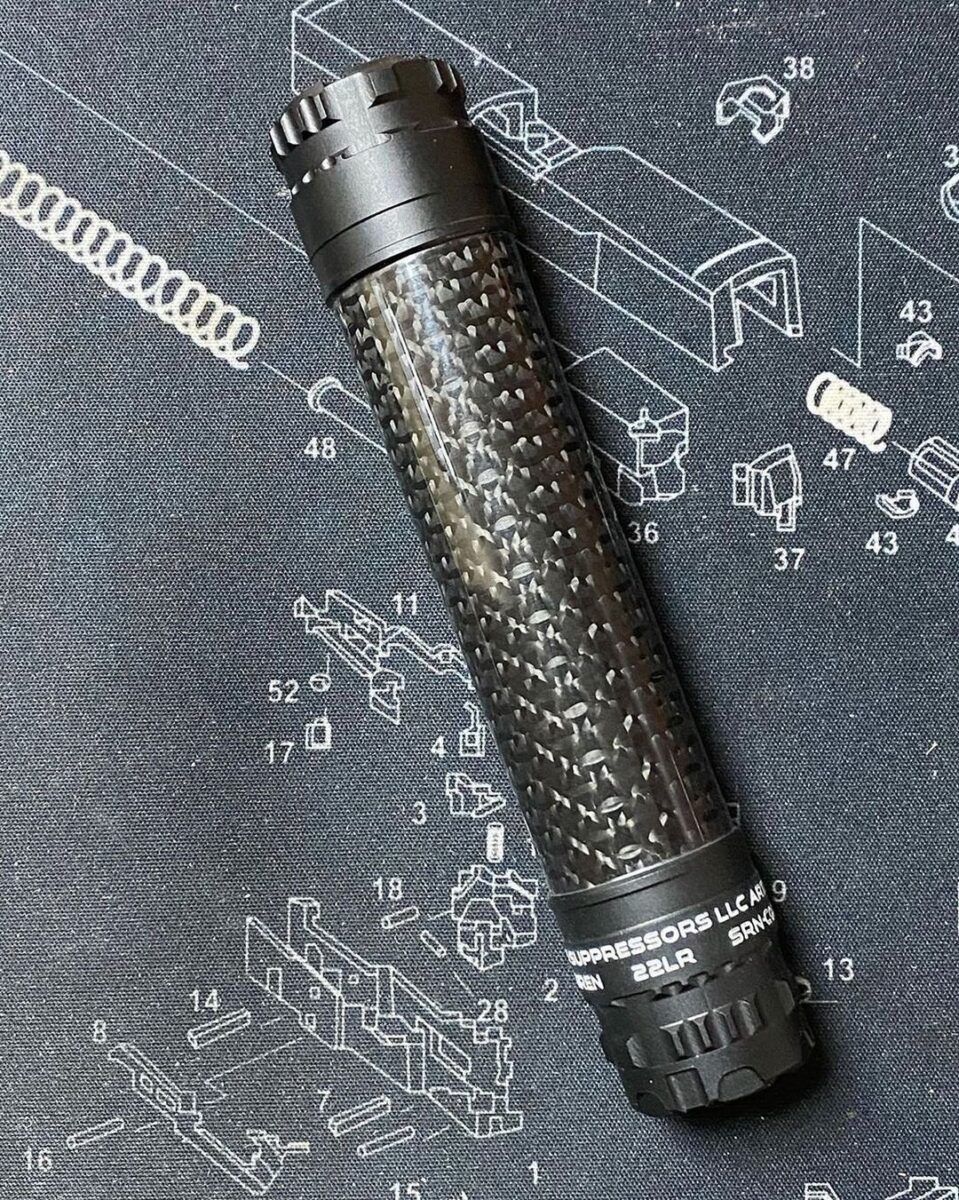
Josh began designing and came up with something that didn’t have traditional baffles but instead used kind of a co-axial component, and it works pretty well. He calls them the ORION baffles. I think it’s a good suppressor. We then took what we learned from that .22 suppressor and moved on from there.
The next thing that we worked on was the Mod9. Things that make it unique is that we started at the piston. You’re fighting for real estate any time you are making a silencer, as an industry-accepted form factor exists. You could make a really awesome suppressor for a pistol that is 12″ long, but no one is going to want it. So, we looked a real estate and started doing things that had not been done.
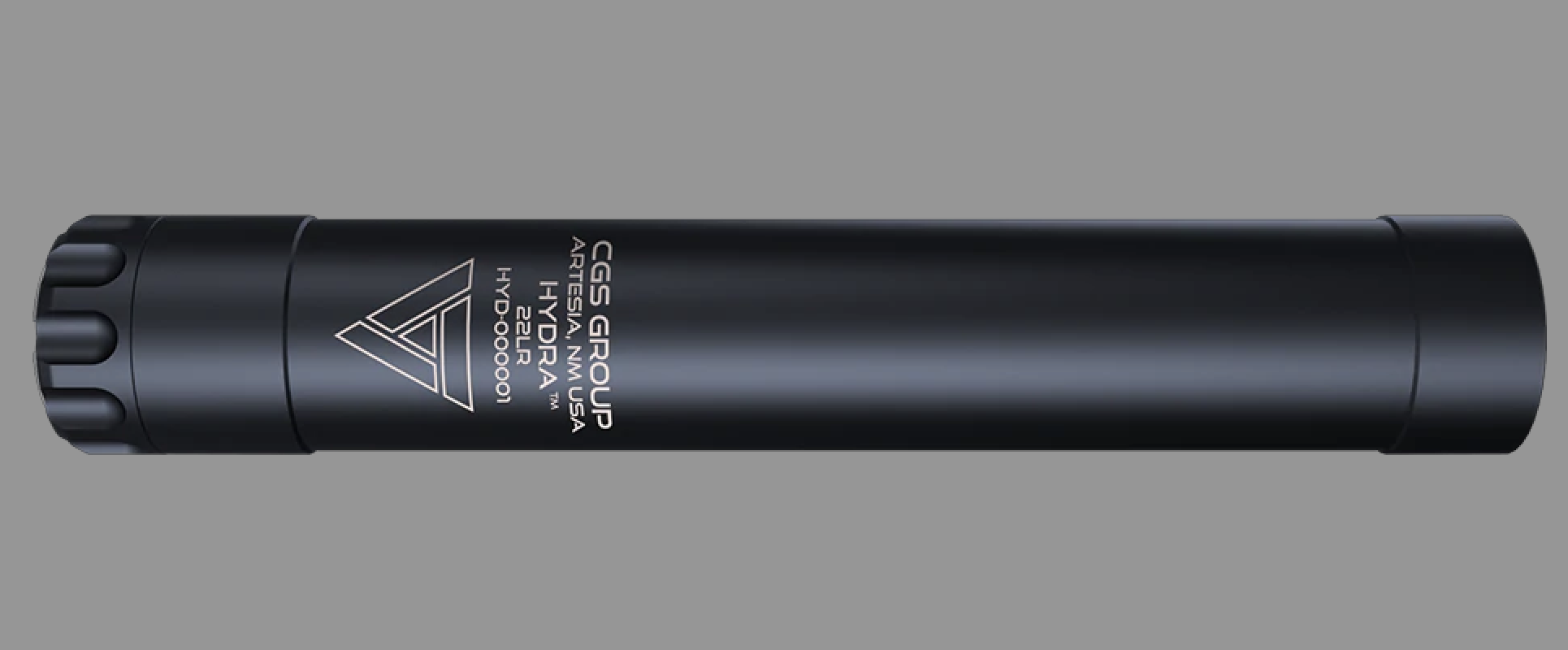
CGS Hydra-SS 22 LR/5.7x28mm Direct Thread Suppressor – 1/2×28
The piston is probably the most overlooked part of a handgun suppressor right now, so we addressed that…we also did some different things with the blast baffle, nesting the blast baffle inside of the piston. Now, in the span of an inch that would generally be open space, we force the piston to act like a baffle and nested the blast baffle in the distal end of the piston.
The result is that the Mod9 performs like a much longer suppressor. It’s not longer, we’re just using the available real estate differently. Later on, we were asked how short we could make it and still be hearing safe on a Glock 19 Gen 3. The Mod9 SK wouldn’t exist except for the fact that someone asked us that question.
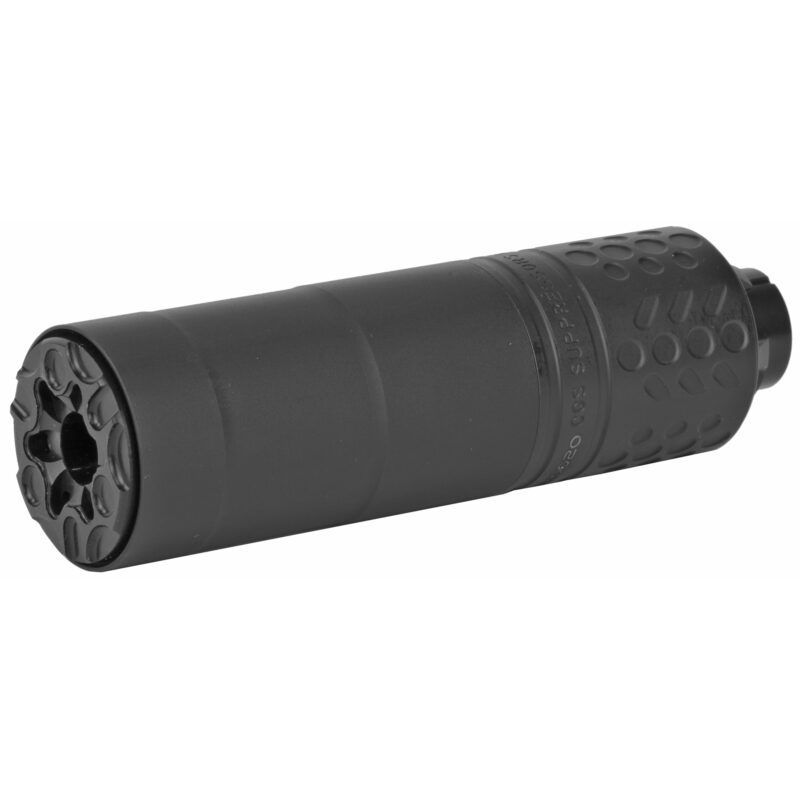
CGS Mod9 SK 9mm Direct Thread Suppressor
Q: Can you talk a bit about your centerfire rifle suppressors? What was first and why are they worth considering?
Bobby West, CGS Group – The CGS Hyperion was first, and it was designed as a part of weapon system solicitation that we participated in. Again, we get asked to many dances that you normally wouldn’t get invited to…It was part of a solicitation for a gas gun in .260 Remington…Due to that solicitation, Josh started designing what is now known as the CGS Hyperion today. Later, when we decided to engage the commercial market, the Hyperion was made to accommodate a .30 caliber projectile.
At CGS Group, we value performance over everything else, and I think that relates to our company DNA. The individuals that work here are arguably the pinnacle of human performance in every way, be it intellectually or physically, or whatever. Performance is what drives us and what excites me. I know it’s what excites Josh. With the Hyperion, we set out to make the quietest can that we could possibly make.
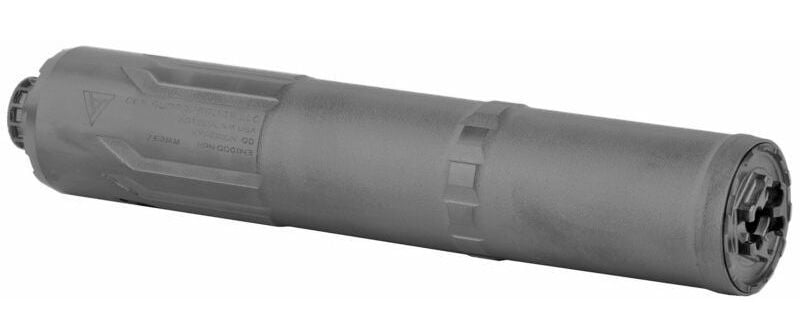
CGS Hyperion 7.62mm QD Suppressor – Black
Josh ended up developing what is patented as “Varying Core Diameter” which is a very unique way of looking at a suppressor, versus a 60-degree cone repeated with pretty much the same spacing from one end to another…
The next thing he did was eliminate the large vacant space, or the “blast chamber.” In our design, directly at the muzzle of the gun where it is threaded into the suppressor, there is a collection of holes behind the muzzle. That gives gas access to what we call the “annular space” that is actually around the outside of the baffle.
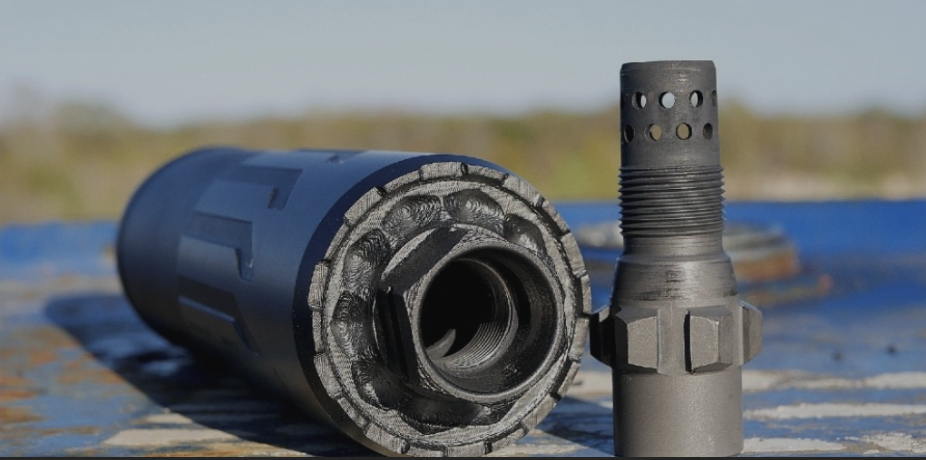
This allows us to reassign the real estate that would typically be used for a blast chamber and put that on the outside of the baffles instead of in front of them. The result is a silencer that acts and sounds lot longer than what it actually is.
We then took a look at adjusting blowback. You can change the front cap on a Hyperion, and you can allow that annular space to vent to atmosphere. The end-user can direct a phase change in the silencer. It’s not stuck in whatever format you received it in. If you need to change it because of the weapon system, you can. Or, if you are a left-handed guy and this thing is causing you problems, just by changing from a sealed front cap to a ported front cap, you can vent the annular space to atmosphere.
That said, there are costs. Blowback and sound reduction are two strings that are tied together. If you pull one, the other one moves. I won’t apologize for physics. That’s just how it works. So, if blowback reduction is what you want, the cost of that in the Hyperion is less sound reduction. If more sound reduction is what you want, then that comes at the cost of mitigating blowback.
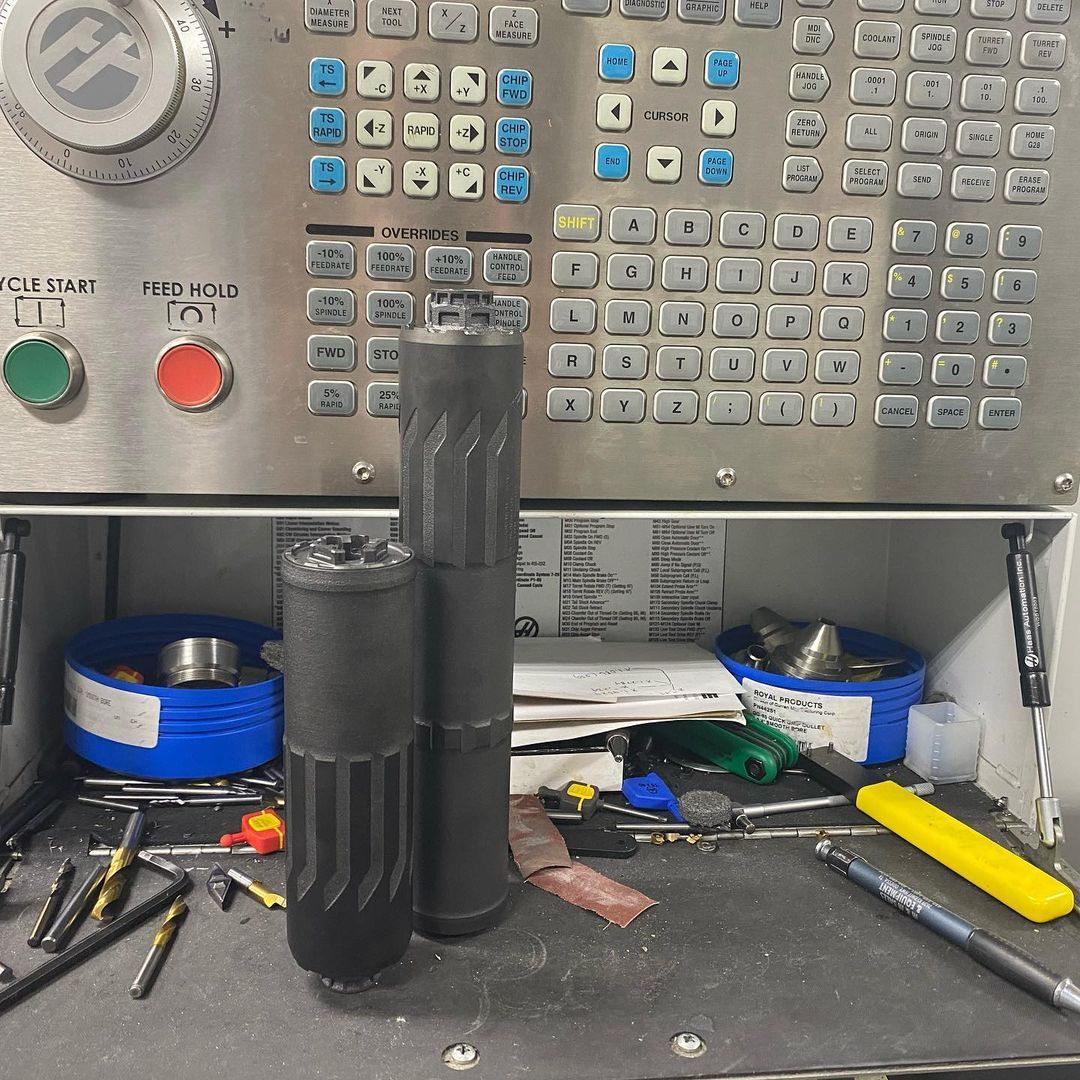
Q: Can you talk a bit about the materials you use and the process used to manufacture your suppressors?
Bobby West, CGS Group – This is a good transition to our Helios QD. We were making our Hyperion and Hyperion K using subtractive manufacturing. That means making the parts, fitting and tacking them together by hand, and then using a CNC tig welder to weld them together. This is one, labor-intensive way to make suppressors.
One day, someone asked us if we could suppress a belt-fed 249. We said that we could. I would have said we could even if I didn’t think we could because it was going to mean that someone was going to send me one of those guns (laughs). We were told it had been tried multiple times but no one had fielded a viable product for the 249.
This ended up putting us on the path of DMLS, or Direct Metal Laser Sintering. I’ll call it ‘3D printing’ because that’s easier to understand. It soon became very clear that if you used a welded suppressor on the 249, that belt-fed machine gun will eventually find a way to cause that suppressor to fail. It’s going to break every time at a weld.
So, we thought ‘let’s not weld them together.’ If we could make it out of a solid monolith of 718 Inconel, it might have a shot at living on this machine gun. We didn’t know how to do that, so we found some folks that knew how. We had them make our Helios QD.
People think it was designed as a carbine suppressor, but it was not intended for that. Does it work on that? Yeah, it’s great, but I don’t know that anyone needs an Inconel monolith suppressor on a gun that takes magazines. So, if you look at one and tell me it’s heavy, now you’ll understand why (laughs.).
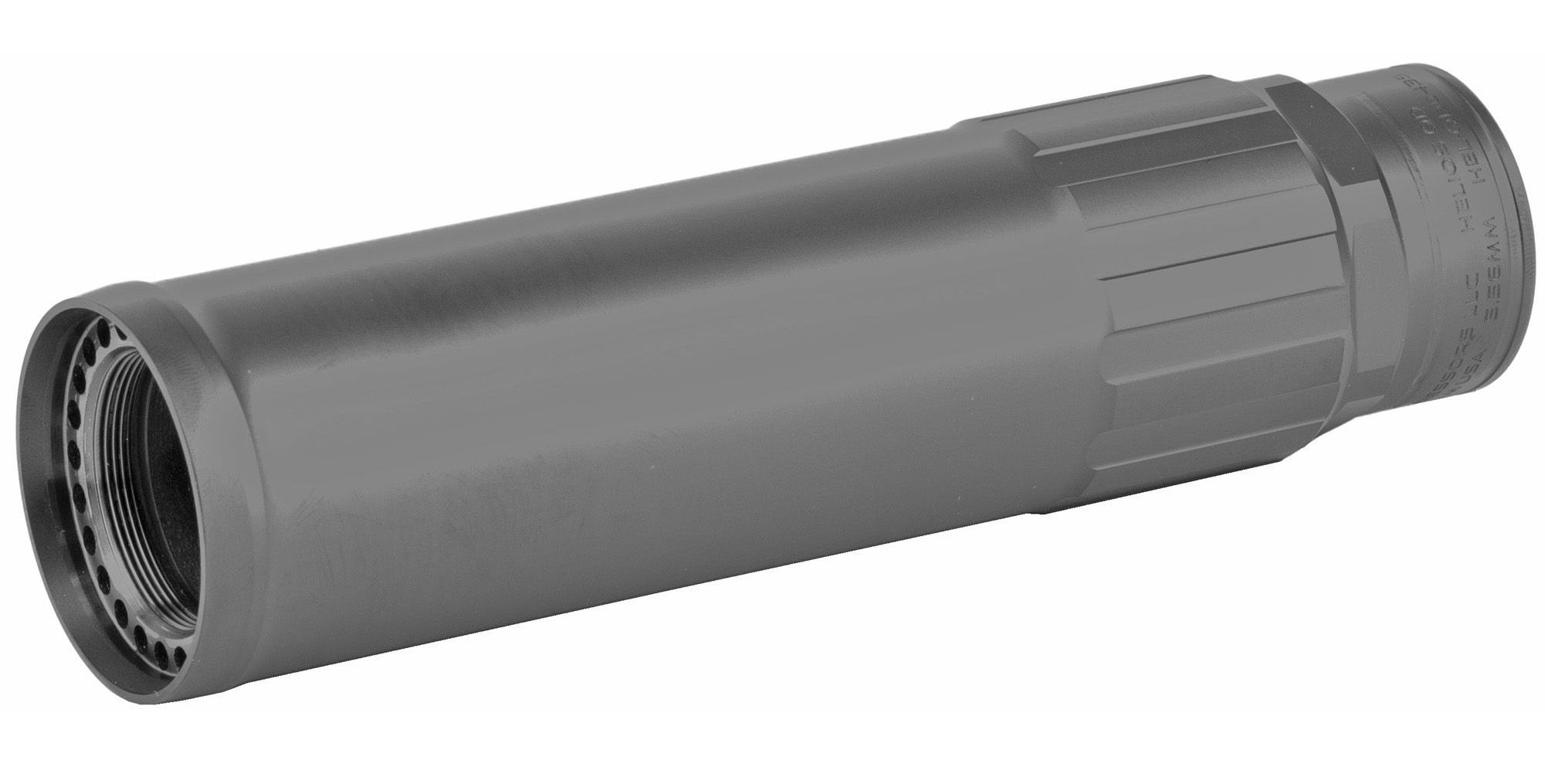
CGS Helios 5.56/.223 QD Suppressor – 1/2×28
Q: When you buy one of these, you’ve got everything you need in the box to attach to your rifle, is that accurate?
Bobby West, CGS Group – We do have two models of the Helios QD now, one is titanium and one is Inconel. Both of them are the same in that they come with two different sized direct thread mounts, both a ported and sealed front cap, an “adaptor ring” to provide additional stand-off for some of the muzzle devices on the market…all of that stuff is in the box. When you get your suppressor the end-user can use it with KEYMO muzzle devices, Silencerco ASR mounts, YHM, Griffin, whatever you already have, you can use it with that.
If you haven’t decided and don’t have any of those muzzle devices, you can then use one of the included direct thread rear caps and go shoot the suppressor the same day.
I don’t want to sell someone something and have them wait 9-12 months, and get it home only to find out they don’t have all the parts they need to use it. Once you open the box, you’re ready to go.
Q: You were driven to the 3D printing solution by necessity. What’s your overall impression of that technology for suppressor manufacturing?
Bobby West, CGS Group – By seeing how the DMLS process worked, it was instantly evident to me that this was the future of manufacturing, generally, and I would argue that it absolutely should be the future of silencer manufacturing. You’re no longer bound by the rules of subtractive manufacturing.
Before we started 3D printing these things, Josh would have two screens up for design and a third screen on a different computer open to where we were going to be buying cutting tools from. You cannot invent things on your computer that you cannot actually make or that you cannot remove material from. He was designing things dimensionally based on tools that exist.
On the most basic level, if you’re 3D printing something, tool dimensions are not something you have to be concerned with. The sky is the limit, and things that were once impossible become very possible. Imagine trying to drill a hole in a piece of bar stock what was shaped in the letter “s.” Let me know how that goes (laughs). Your drill bit is not going to make that turn. With 3D printing, none of that matters. You’re not drilling anything.
It unlocks the mind of the designer and puts them in a totally different space. He is no longer constrained. For the silencer industry, this is huge, and it allows us to push the envelope.
We’re going to push the envelope of design as far as we are capable of. Then we’re going to push the envelope of manufacturing as far as we are able. Finally, we’re going to address and push coatings, which I think is an area that is being overlooked. We want to push the envelope of coatings as far as is technically possible.
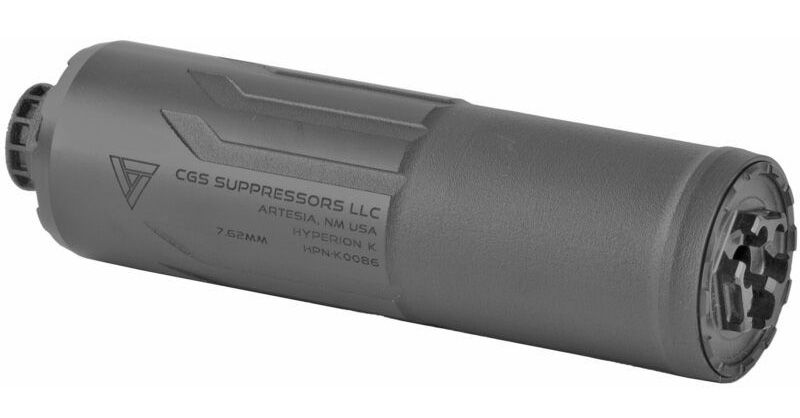
CGS Hyperion K 7.62mm QD Suppressor – Black
Q: You mean coatings on the outside or are you talking about where you’re putting coatings?
Bobby West, CGS Group – No one is putting coatings on the inside of suppressors. Why not? Because you can’t see it? I don’t care if you can see it. The inside of every centerfire suppressor we make is coated with a hexagonal Boron Nitride. This acts as a friction reduction agent. Stuff like carbon and copper does not stick to this. Those things collect in the suppressor, which can eventually take up negative space in the design. Eventually, the functionality and performance of the suppressor decreases as a result.
Right now, we’re the only ones doing it. I don’t care if anyone else will ever see it, but if it keeps the end-users product functioning as intended, I don’t even care how much it costs. It’s not cheap but it’s worth it. Not for me, but for you.
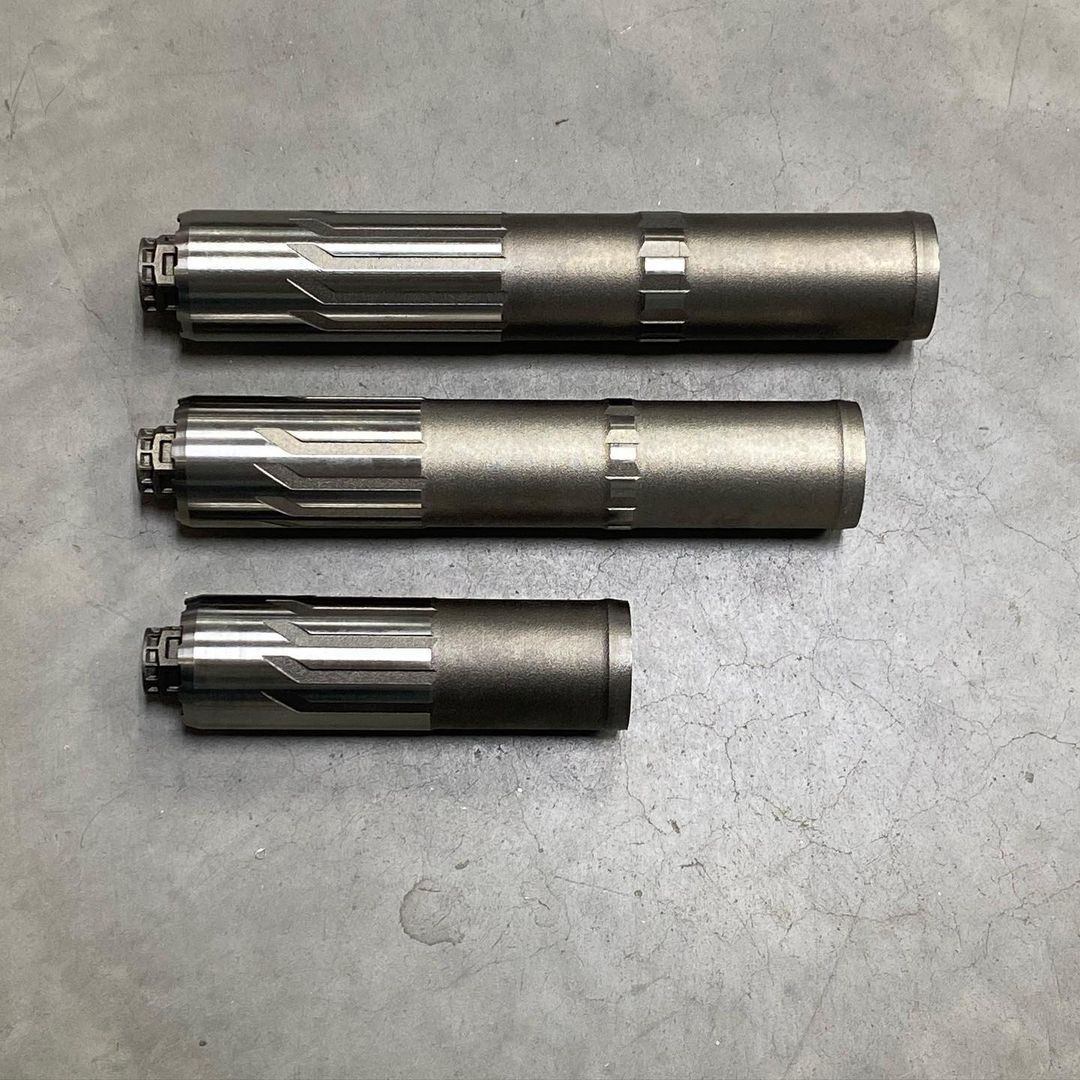
Q: Anything else you’d like to add?
Bobby West, CGS Group – We’re in an interesting time in the silencer industry. Everyone out there says that they make the best suppressor. If you don’t believe me, just ask them. Name me a company that doesn’t make the “best suppressor.” That cannot be true.
My point is that the lack of standardized testing has been problematic for the consumer. There is a lot of marketing and a lot of messages going to people. The people that are the best at telling their story are generally the best at sales.
Look, the industry is a lot smaller than people think. We communicate with our competitors probably a lot more than people think. I mean, I love these people. This is a hard way to make a living, so anyone who does it, I have a love for them.
When I talk to them, it becomes evident why we are different. The people that make a lot of money doing this, the metric they use to define silencer performance can be described as “units sold.” That is not the metric that we use. We don’t even think about that. You probably wouldn’t want me running your silencer company because “units sold” does not even cross my mind when making these products. It’s not that I don’t care how many I sell. I want them to sell, but I’d rather they work.
Thankfully, there are third-party ratings out now, like Jay from Pew Science. He has a desire to do it and the qualification and skills to do it the right way. I think we’re fortunate for his efforts. I think it’s the best thing that’s happened for the silencer consumer in a long time. I think you will see a renaissance in the suppressor industry because of it.
Rather than ‘units sold’ mattering, what if “performance” starts mattering? The consumer will be the ultimate beneficiary. It’s something I’m rooting for, and it’s something that will make us even better as we can look at that data and work to improve our own products.
###
